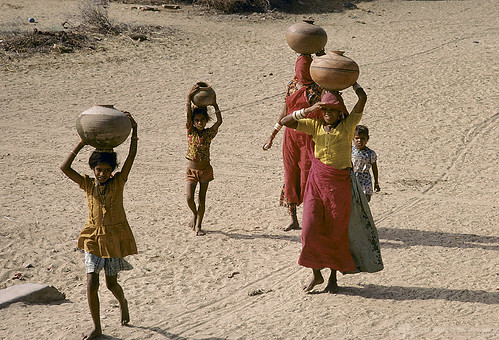March 8th marks International Women’s Day, when we celebrate the achievements of women worldwide in various realms (economic, political, social). Women have had a very strong and positive impact on my own research agenda. I’m the son of a political science professor (my Mom is a specialist in federalism and intergovernmental relations), I collaborate with many female scholars, I have taught hundreds of incredibly bright young women and I continue to mentor and supervise female students.
One topic in which several of my undergraduate students wrote papers and I never had the time to delve into in depth has been the interrelationships between gender, water and sanitation. I’m also good friends with the founders of Vancouver-based social enterprise LunaPads, (Suzanne Siemens and Madeleine Shaw), who advocate for and support charities like One4Her. Through the conversations with my students, the founders of LunaPad and my friend and colleague Janni Aragon (who does research on gender and public policy) I’ve become more aware of the negative impact of lack of proper sanitation and access to water on women, which is pretty substantial.
Surveys from 45 developing countries show that women and children bear the primary responsibility for water collection in the majority of households. This is time not spent working at an income-generating job, caring for family members, or attending school. In just one day, it is estimated that more than 152 million hours of women and girls’ time is consumed for the most basic of human needs — collecting water for domestic use. [Source: Water.org]
Time spent collecting water is not the only negative effect of lack of access on women, but also distance travelled to fetch it.
On average women and children travel 10-15 kilometers per day collecting water and carrying up to 20 kilos or 15 litres per trip. Some 30% of women in Egypt walk over 1 hour a day to meet water needs. In some parts of Africa, women and children spend 8 hours a day collecting water [Source: Gender & Water Network]
Young girls often have to miss school during their menstrual periods, and lack of safe sanitation facilities has a strong deleterious effect, also potentially putting them in harm’s way and increasing their probability of facing violence.
In Kenya in Kibera, women on average walk 300 meters from their homes to use pit latrines making access dangerous for them and their children at night (Source: Amnesty International, 2010 – Water and Sanitation Programme)
Given my interest in vulnerable communities, I am keen to continue studying water and sanitation through a gender lens, and to help increase women’s access to proper sanitation facilities and to clean water. On International Women’s Day, I urge you to keep in mind the links between gender, water and sanitation, and to remember that lack of access to water and sanitation can potentially have a much more negative effect on women than on men. Think about it.



Raul, thank you for this insightful piece and shining a light on this often overlooked problem.